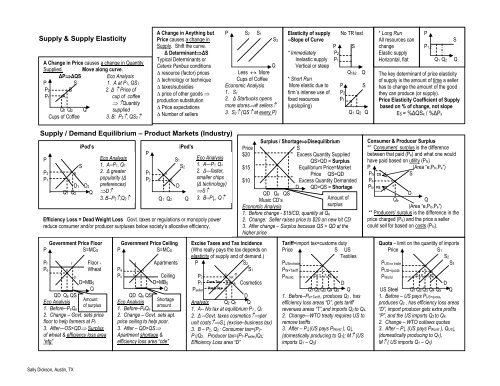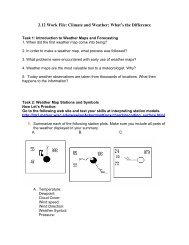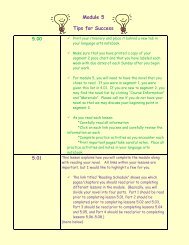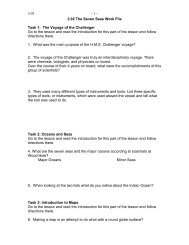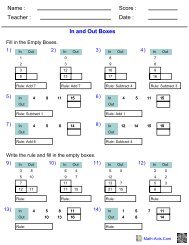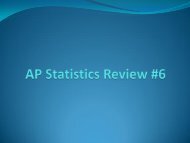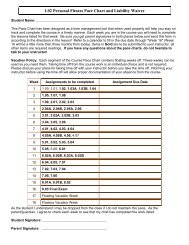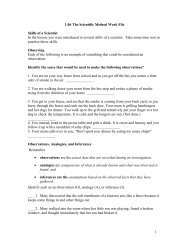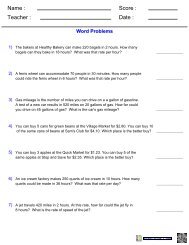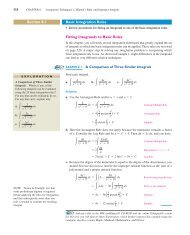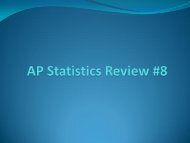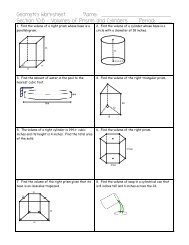Microeconomics Cue Card - the Educator Login page!
Microeconomics Cue Card - the Educator Login page!
Microeconomics Cue Card - the Educator Login page!
- No tags were found...
Create successful ePaper yourself
Turn your PDF publications into a flip-book with our unique Google optimized e-Paper software.
Supply & Supply ElasticityA Change in Price causes a change in QuantitySupplied. Move along curve.ΔPΔQSEco AnalysisP S 1. A at P1, QS1P2 B 2. Δ Price ofP1 A cup of coffee QuantityQ1 Q2 Q suppliedCups of Coffee3. B: P2, QS2A Change in Anything butPrice causes a change inSupply. Shift <strong>the</strong> curve.Δ DeterminantΔSTypical Determinants orCeteris Paribus conditions resource (factor) prices technology or technique taxes/subsidies price of o<strong>the</strong>r goods production substitution Price expectations Number of sellersP S2 S1S3QLess MoreCups of CoffeeEconomic Analysis1. S12. Δ Starbucks opensmore stores# sellers3. S3 (QS at every P)Elasticity of supply No TR test--Slope of CurveP S* Immediately P2Inelastic supply P1Vertical or steepQ1&2 Q* Short RunMore elastic due to P Sfirm´s intense use of P2fixed resources P1(upslopiing)Q1 Q2 Q* Long RunAll resources canchangeElastic supplyHorizontal, flatThe key determinant of price elasticityof supply is <strong>the</strong> amount of time a sellerhas to change <strong>the</strong> amount of <strong>the</strong> good<strong>the</strong>y can produce (or supply).Price Elasticity Coefficient of Supplybased on % of change, not slopePP1,2Q1 Q2ES = %ΔQSx / %ΔPxSQSupply / Demand Equilibrium – Product Markets (Industry)PP2P1AEfficiency Loss = Dead Weight Loss Govt. taxes or regulations or monopoly powerreduce consumer and/or producer surpluses below society’s allocative efficiency.Government Price FloorPS=MCSPf f Floor -Pe e WheatBQ1 Q2D1QD Qe QSEco Analysis1. Before--PeQegiPod’sD=MBSQAmountof surplus2. Change – Govt. sets pricefloor to help farmers at Pf.3. After—OS>QD Surplusof wheat & efficiency loss area―efg‖SD2QEco Analysis1. A--P1, Q12. Δ greaterpopularity (Δpreferences)D3. B--P2,Q2Government Price CeilingPS=MCSPePccQD Qe QSEco Analysis1. Before–PeQedePP1P2ApartmentsCeilingD=MBSQShortageamount2. Change – Govt. sets apt.price ceiling to help poor.3. After – QD>QSApartment shortage &efficiency loss area ―cde‖ABQ1 Q2S1DiPod’sS2QEco Analysis1. A—P1, Q12. Δ—faster,smaller chips(Δ technology)S3. B--P↓, QExcise Taxes and Tax Incidence(Who really pays <strong>the</strong> tax depends onelasticity of supply and of demand.)PS2P2P1PsellerB tax Surplus / ShortageDisequilibriumPriceS$20 Excess Quantity SuppliedQS>QD = Surplus$15 Equilibrium Price=MarketPrice QS=QD$10 Excess Quantity DemandedD QD>QS = ShortageQD Qe QSMusic CD’sAmount ofEconomic Analysissurplus1. Before change - $15/CD, quantity at Qe2. Change: Seller raises price to $20 on new hit CD3. After change – Surplus because QS > QD at <strong>the</strong>higher priceS1Cons.TaxD A CosmeticsProd. TaxDAnalysis Q2 Q1 Q1. A-- No tax at equilibrium P1 , Q12. Δ --Govt. taxes cosmeticsperunit costsS↓ (excise–business tax)3. B – P2, Q2 : Consumer tax=(P2-P1)Q2; Producer tax=(P1-Pseller)Q2;Efficiency Loss area ―D‖Tariff=import tax=customs dutyPrice S USTextilesPUSnotradePW+TariffPWorldD TT DDQ1 Q2 Q3 Q4 Q5 Q1. Before--Pw+Tariff., produces Q2 , hasefficiency loss areas ―D‖, gets tariffrevenues areas ―T‖,and imports Q2 to Q4.2. Change—WTO treaty requires US toremove tariffs3. After – P↓(US pays PWorld ), Q↓(domestically producing to Q1); M (USimports Q1 – Q5)Consumer & Producer Surplus** Consumers’ surplus is <strong>the</strong> differencebetween that paid (Pe) and what one wouldhave paid based on utility (Phi)P(Area ―e,Phi,Pe‖)Phi CSSPePlo PSQuota – limit on <strong>the</strong> quantity of importsPriceS1PUS no tradePUS+quotaPWorldeDQeQ(Area ―e,Plo,Pe‖)** Producers’ surplus is <strong>the</strong> difference in <strong>the</strong>price charged (Pe) and <strong>the</strong> price a sellercould sell for based on costs (Plo).D PP DS2S3DUS Steel Q1 Q2 Q3 Q4 Q5 Q1. Before – US pays PUS+quota,produces Q2 , has efficiency loss areas―D‖, import producer gets extra profits―P‖, and <strong>the</strong> US imports Q2 to Q4.2. Change – WTO outlaws quotas3. After – P↓ (US pays PWorld ), QUS↓(domestically producing to Q1),M ( US imports Q1 – Q5)Sally Dickson, Austin, TX


